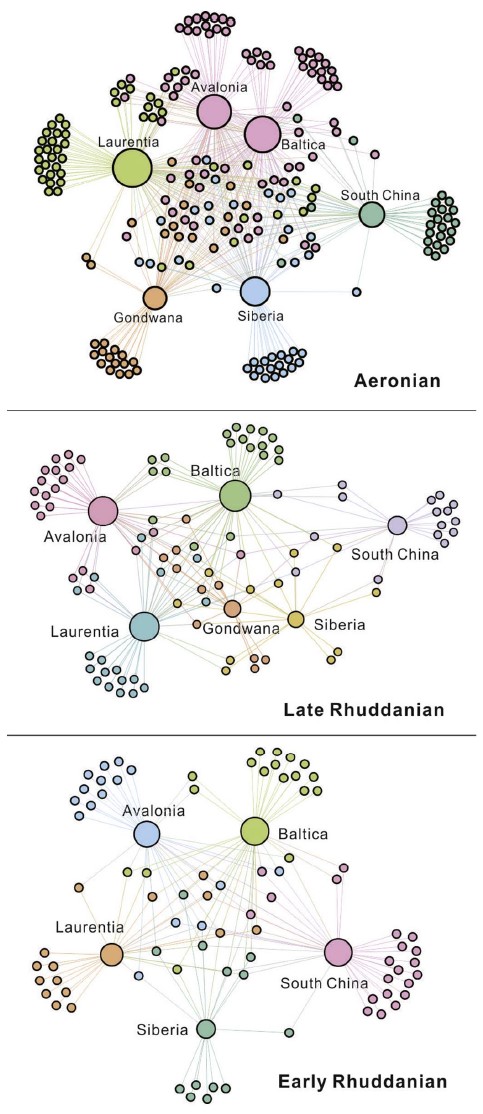The Late Ordovician biotic crisis was associated with a brief but intense glaciation episode in earth history. Post-glacial marine transgression created vast habits in epicontinental seas, in which benthic faunas established and diversified, with brachiopods being one of the most abundant and diverse fossil groups.
Recently, to reveal diversification patterns of brachiopods after the end Ordovician mass extinction, a study carried on by Prof. HUANG Bing and CAS Academician RONG Jiayu from Nanjing Institute of Geology and Palaeontology, Chinese Academy of Sciences together with Prof. Jin Jisuo from Department of Earth Sciences, University of Western Ontario, London, Canada. Based on detail data of brachiopod occurrences after the end Ordovician mass extinction, together with newly published information, they analyzed the diversification patterns of brachiopods from the Rhuddanian to the Aeronian (early Silurian) by Network Analysis and Frequency Distribution Analysis.
The study discovered that Rhuddanian brachiopod faunas were characterized by low diversity and localized high abundance, except for a relatively high-diversity early Rhuddanian fauna in Avalonia-Baltica and South China. Invariably, these faunas were predominated by re-established holdover and once-cosmopolitan taxa from the Late Ordovician, primarily orthides and strophomenides. By the Aeronian, global brachiopod diversity nearly doubled in comparison with the Rhuddanian, owing to a major diversification of Silurian-type brachiopods in both the paleotropics and high-latitude Gondwana, as well as the concomitant proliferation of endemic and cosmopolitan taxa, in association with a global expansion of epicontinental seas and heterogeneity of specialized local habitats.
A drastic turnover of brachiopods from the Ordovician to the Silurian type significantly affected the Paleozoic evolutionary fauna. With the ordinal data of brachiopods in major palaeoplates, we discussed the turnover process. Compared with orthides and strophomenides of typical Ordovician brachiopods globally increased their diversity after the extinction, atrypides and pentamerides of Silurian group displayed a drastic diversification from Rhuddanian to Aeronian only in lower latitude continents, demonstrated the two new orders more preferred warm water environments than the Ordovician groups. Atrypides recovered from the early Rhuddanian, whereas diversification of pentamerides delayed until to Aeronian typically demonstrated by the record of many endemic taxa from South China. The Silurian-type atrypide and pentameride communities thrived mainly in relatively shallow environments (BA2–3) during the Rhuddanian, but expanded and dominated in deeper, mid-shelf and outer-shelf settings (BA3–5) by the Aeronian.

Network diagram showing the diversification process through the three time slices. Note the increase in cosmopolitan and endemic taxa in the major paleoplates, as well as the faunal connections among them
Download:
